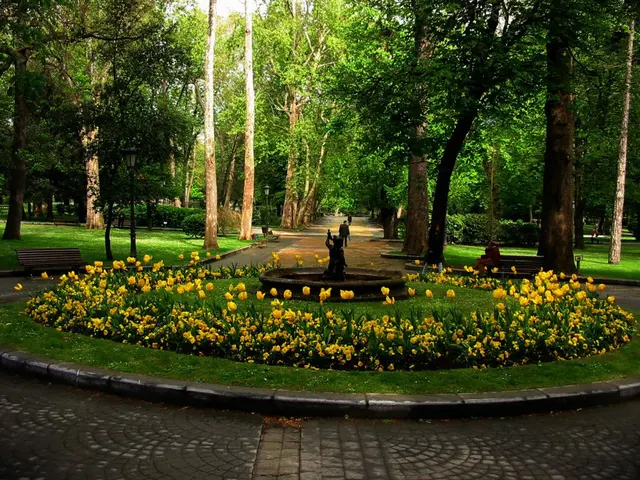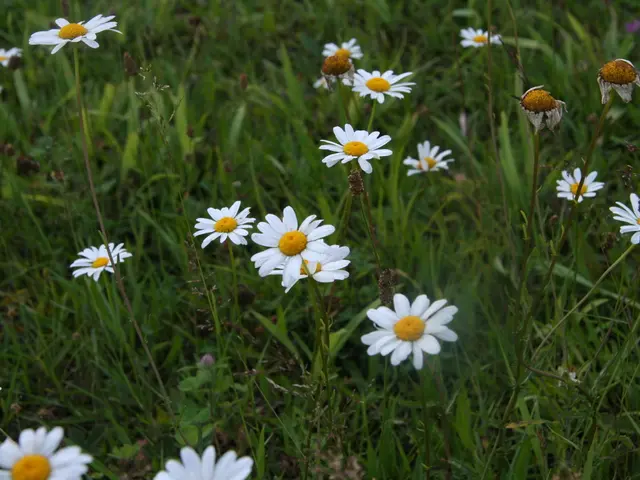Ten destructive climbing plants to avoid cultivating in your garden
Gardening can be a delight, especially when a new vine adds a touch of vertical interest and sometimes fragrant flowers to your outdoor space. But beware, some non-native vines are no friends – they'll bully their way through your garden, climbing over shrubs, and even suffocating trees and native plants.
These invasive vines spread through various means such as seeds, creeping stems, or fruits consumed by birds and animals. Maxwell Kotelnicki, the outdoor horticulture manager at the Atlanta Botanical Garden, warns, "Invasive plants cause environmental harm through their rapid growth. They're highly adaptable to sun, shade, and moisture levels, outcompeting native plants that wildlife relies on."

So, it's crucial to know which plants are invasive. Many of these vines are still sold at nurseries or online, and what's invasive in one region may not hold the same status elsewhere, according to Kotelnicki. To avoid planting the wrong species, do your homework. Consult your local university coop extension service or your state's department of natural resources and conservation for guidance on the vines you should steer clear of and explore native alternatives.

Here are ten invasive vines you should never plant in your garden and their native alternatives that won't take over, offering environmental benefits to native wildlife.
- Chinese Wisteria (Wisteria sinensis)This vine, renowned for its purple flower clusters, can kill trees and form a thicket where nothing grows. Instead, opt for American wisteria (Wisteria frutescens).
- Wintercreeper (Euonymus fortunei)An aggressive, evergreen groundcover that's invasive in most of the eastern U.S., sometimes climbing trees. Choose Green and gold (Chrysogonum virginianum) as an alternative.
- Japanese Climbing Fern (Lygodium japonicum)This climbing fern can grow up to 90 feet tall into the tree canopy, choking out native plants. Leatherflower (Clematis viorna) would make a better choice.
- English Ivy (Hedera helix)Popular yet aggressive, this groundcover can spread quickly and provide good cover for mosquitoes. Plant Carolina jessamine (Gelsemium sempervirens) instead.
- Autumn Clematis (Clematis terniflora)This semi-evergreen vine invades forested areas, smothering vegetation and rapidly self-seeding, particularly in shady conditions. Go for Woodbine (Clematis virginiana) instead.
- Japanese Honeysuckle (Lonicera japonica)This vine envelops perennials, shrubs, and trees, making removal difficult. Try planting Coral honeysuckle (Lonicera sempervirens) instead.
- Porcelain Berry (Ampelopsis brevipedunculata)Also called amur peppervine, this invasive vine features pretty pink or blue berries and can easily take over an area. Instead, choose Muscadine grape (Vitus rotundifolia).
- Multiflora Rose (Rose multiflora)This invasive rose, with its clusters of small white flowers, forms thickets and reduces nesting places for birds. Plant Climbing prairie rose (Rosa setigera) instead.
- Periwinkle (Vinca minor)A popular groundcover that forms dense mats, preventing other plants from co-existing. Use Partridgeberry (Mitchella repens) as an alternative.
- Chocolate Vine (Akebia quinata)Evergreen and shade-tolerant, this vine invades forested areas, climbing and suffocating small trees and shrubs. Opt for Passionflower (Passiflora incarnata) as a better choice.
- For gardening ideas, consider avoiding invasive plants like the Chinese Wisteria (Wisteria sinensis), known for its aggressive growth and potential to kill trees.
- In garden design, it's wiser to choose native alternatives such as American wisteria (Wisteria frutescens) instead, to create a harmonious outdoor space that benefits native wildlife.
- Southern Living recommends doing your homework before planting to prevent the introduction of invasive species, such as Wintercreeper (Euonymus fortunei).
- To maintain a health-and-wellness lifestyle and support environmental science, consult your local resources for a list of invasive vines, like Japanese Climbing Fern (Lygodium japonicum), and explore sustainable alternatives such as Leatherflower (Clematis viorna).
- Climate-change and environmental-science research indicate that some plants like English Ivy (Hedera helix) have negative impacts on ecosystems, so consider planting native alternatives like Carolina jessamine (Gelsemium sempervirens) instead.
- When practicing fitness-and-exercise, choose a home-and-garden lifestyle that promotes eco-friendly practices by avoiding invasive plants, such as Autumn Clematis (Clematis terniflora), and opting for environmentally-friendly alternatives, like Woodbine (Clematis virginiana).








